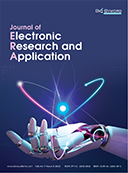Abstract
This paper provides an in-depth discussion of the joint strength of electron beam welding of dissimilar materials. The effect of welding parameters and material properties on the joint strength was analyzed, and an argument for the optimal parameter combination is presented. Electron-beam welding technology offers several advantages, including high energy density and the ability to create fine weld seams. However, it also presents certain challenges, such as the complexity of welding parameters and the potential generation of brittle phases. The analysis conducted in this paper holds significant importance in enhancing the quality and efficiency of dissimilar material welding processes.
References
Zhang B, Wang Y, Wang H, 2022, Progress of Electron Beam Welding of Advanced and Dissimilar Materials. Journal of Welding, 43(08): 95–101 + 119–120.
Feng J, 2022, A Review on the Progress of Dissimilar Material Joining Research. Journal of Aeronautics, 43(02): 6–42 + 457.
Zhang B, Wang Y, Wang H, 2022, Progress of electron beam welding of advanced and dissimilar materials. Journal of Welding, 43(08): 95–101 + 119–120.
Hu M, 2021, Research on Electron Beam Welding of Steel and Aluminum Dissimilar Metals. Inner Mongolia Petrochemical Industry, 47(10):1-4.
Sun W, Wang S, Hong M, et al., 2019, Electron Beam Welding of Copper and Austenitic Stainless Steel Dissimilar Materials. Precision Molding Engineering, 11(05): 55–62.
Zhan Z, 2018, Crack Sensitivity of TiNi alloy/TC4 Titanium Alloy Electron Beam Welded Joints and its Control, dissertation, Nanchang University of Aeronautics and Astronautics.
Song T, 2018, Research on Dissimilar Metal Welding Organization and Properties of AISI316L Stainless Steel and TC4 Titanium Alloy, dissertation, Southwest Jiaotong University.
Wang Y, 2018, Research on Electron Beam Welding Process of Dissimilar Materials of a Missile Fuel Tank ZL114A and 5A06 Aluminum Alloy, dissertation, Beihua Institute of Aerospace Industry.
Chen G, Shu X, Liu J, et al., 2018, Current Status of Research on the Application of Vacuum Electron Beam Welding Technology. Precision Molding Engineering, 10(01): 31–39.
Jiang C, 2018, Research on Electron Beam Welding Process and Organizational Properties of Ti40/TC4 Dissimilar Titanium Alloy, dissertation, Nanchang University of Aeronautics and Astronautics.
Peng C, 2016, Mechanism of Dissimilar Metal Fusion Welding Connection Based on Electron Beam Welding, dissertation, Nanchang Aviation University.
Li H, 2014, Introduction to the Welding Process of Aluminum and Steel Dissimilar Materials. Science Chinese, 2014(20): 15.
Cao Z, Yang J, 2023, Finite Element Numerical Simulation Analysis of Welding Performance of 316L/TU1 Dissimilar Materials with Different Thicknesses. Journal of Xinxiang College, 40(03): 54–58.
Jiao B, Guo C, Jiang F, 2023, Application of Electron Beam Welding in Gas Turbine Production. Thermal Turbine, 52(01): 18–24.
Feng J, Wang T, Zhang B, et al., 2009, Analysis of the Current Status of Vacuum Electron Beam Welding of Dissimilar Materials. Journal of Welding, 30(10): 108–112 + 118.
